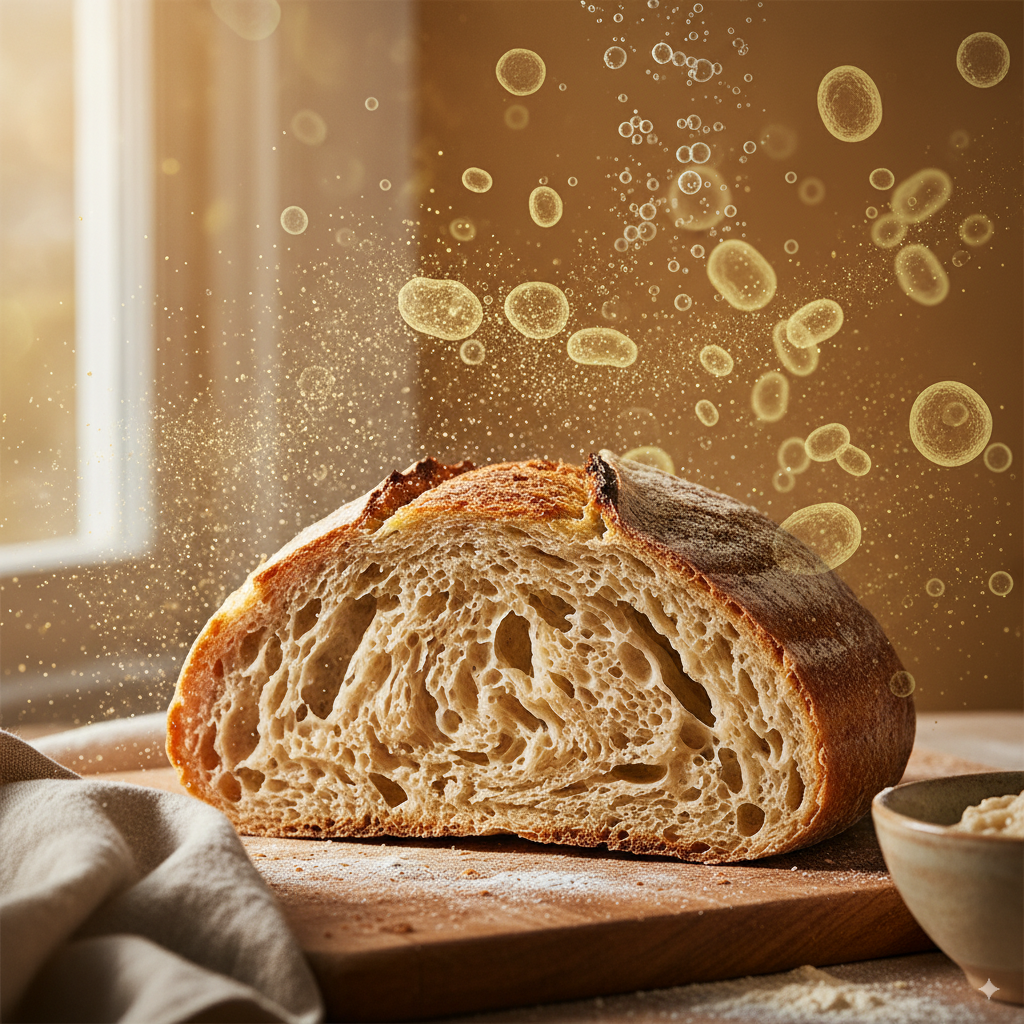Natural Yeast in Sourdough Bread: A Comprehensive Guide
Learn about natural yeast in sourdough bread. The world of bread baking is diverse, offering an abundance of types, textures, and flavors. Among this wide variety, one stands out both for its distinctive taste and its unique baking process: sourdough bread. Sourdough utilizes a special kind of leavening agent not typically found in other breads – wild yeast. In this in-depth guide, we’ll explore the captivating world of wild yeast, its role in sourdough baking, and how it shapes the flavor, texture, and nutritional profile of the final product.
The Secret Ingredient: Wild Yeast
Sourdough’s yeast isn’t your average store-bought yeast. This yeast is wild, naturally occurring fungi that are all around us – in the air, on our hands, and on the surface of the grains we use for our flour. These wild yeasts belong to the Saccharomyces cerevisiae species, known for their fermentation capabilities.
In contrast to commercial yeast, which is typically a single strain of Saccharomyces cerevisiae, wild yeast comprises various strains of Saccharomyces cerevisiae and other yeast species such as Candida milleri. These yeasts’ diversity contributes to the rich and unique flavor profile of sourdough bread.
The Magic of Wild Yeast in Sourdough Baking
Wild yeast is the driving force behind the fermentation process in sourdough baking. When mixed with flour and water, the yeast starts to consume the natural sugars in the flour. This process produces carbon dioxide, causing the dough to rise, and alcohol, which evaporates during baking but leaves behind the distinctive tangy flavor we associate with sourdough.
Cultivating Your Sourdough Starter: A Flourishing Microbial Community
The first step in sourdough baking is creating a sourdough starter. A starter is essentially a mixture of flour and water that cultivates a thriving community of wild yeast and beneficial bacteria, specifically lactic acid bacteria. These bacteria further contribute to the fermentation process and help to produce the classic tangy flavor of sourdough bread.
Creating a sourdough starter is quite simple: you mix equal parts flour and water and let it sit in a warm place. Over several days, you continue to ‘feed’ this mixture with more flour and water. With each feeding, the wild yeast multiplies and the mixture ferments.
Wild Yeast’s Impact on Sourdough Flavor and Texture
Wild yeast significantly influences the taste and texture of sourdough bread. During the fermentation process, the yeast and bacteria produce organic acids and other flavor compounds. The lactic acid bacteria produce lactic acid, which contributes a mild sourness, while the yeast produces alcohol and other compounds that add a depth of flavor.
The yeast’s activity also affects the dough’s structure, leading to a bread with a chewy texture and a robust, crispy crust – the signature traits of a classic sourdough loaf. Thus, wild yeast is not merely an ingredient but a master artisan shaping the bread.
Wild Yeast vs. Commercial Yeast
What makes bakers opt for wild yeast over commercial yeast? The benefits are manifold. The slow fermentation process of sourdough, driven by wild yeast, results in a complex flavor profile that’s hard to achieve with commercial yeast. Additionally, wild yeast fermentation makes the bread more digestible and reduces its glycemic index, making it a healthier choice for many people. Baking with wild yeast also provides a unique connection to ancient bread-making traditions, fostering a sense of continuity and craftsmanship.
Experimenting with Sourdough: The Baker’s Playground
Sourdough is an excellent medium for bakers who love to experiment. Its flexible nature allows for variations with different flours, hydration levels, fermentation times, and baking techniques. You can create a myriad of bread types, each with a unique taste and texture profile, by manipulating these variables.
For example, using different types of flour like whole grain, rye, or spelt can add new flavors and textures to your sourdough. Altering fermentation times can lead to a more or less sour loaf, letting you customize the bread to your liking.
The world of sourdough baking is as fascinating as it is rewarding. Understanding the pivotal role of wild yeast helps unlock the secrets of this age-old baking craft. With a vibrant starter, patience, and a willingness to learn, you can bake beautiful, flavorful, and nutritious sourdough loaves in your kitchen. As you delve into the world of sourdough, you’ll come to appreciate the remarkable magic of wild yeast even more.
